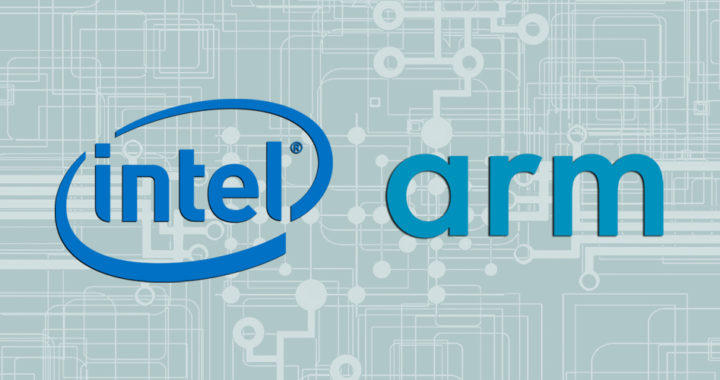Intel Corporation is an American designer and manufacturer of semiconductor chips known for developing and popularizing the x86 series of microprocessors. On the other hand, Arm Ltd. is a British designer of microprocessors known for developing and popularizing microprocessors based on the ARM architecture.
The two companies essentially provide and utilize the two major types of microprocessor architecture in the market. The chips from Intel are based on its x86 architecture, while the ones from Arm are based on the ARM architecture. There are notable differences between Intel and ARM chips, as well as the business models of Intel Corp. and Arm Ltd.
Understanding the Difference Between Intel and Arm: x86 Architecture vs. ARM Architecture
Business Models of Intel Corp and Arm Ltd
Intel designs and manufactures semiconductor chips under the Intel brand, as well as motherboard chipsets, network interface controllers, and integrated circuits. For its microprocessor business, it has been known for introducing numerous CPUs brands to include the Intel Core series of processors for midrange and enthusiast computer users, as well as the Intel Xeon series of high-end processors for the server and workstation markets.
The company follows business-to-business and business-to-consumer models. More specifically, it supplies microprocessors for computer manufacturers such as Dell Technologies, HP Inc., Lenovo Group Limited, Microsoft Corporation, and Apple Inc., among others. It also sells these processors to end-users through retail distribution. Intel is essentially a designer, manufacturer, and marketer of semiconductor chips.
Arm Ltd. is both a software and semiconductor designer with a primary business centered on the design of ARM microprocessors. Unlike traditional suppliers of processors such as Intel, the company simply designs semiconductor chips and licenses the principal technologies as intellectual property, rather than manufacturing and selling its own microprocessing units such as CPUs and GPUs, as well as microcontrollers.
The company also provides three types of licensing agreements: core design license, Built on Arm Cortex Technology license, and architectural license. The architectural license allows licensees to design their own chips based on the Arm architecture. Some of the notable holders of Arm licenses include Advanced Micro Devices, Inc. or AMD, Apple Inc., Qualcomm Incorporated, Nvidia Corporation, and Samsung Group, among others.
CISC and RISC Architectures for Processors
Of course, aside from the difference in their business models, remember that the two companies are known for designing microprocessors based on different architectures. Intel CPUs are based on its proprietary x86 architecture, while chips by Arm Ltd. are based on its proprietary ARM architecture. Hence, the difference between Intel and Arm rests on the difference between x86 processors and ARM processors.
An x86 architecture and the corresponding processors are based on complex instruction set computer or CISC architecture, while ARM is based on reduced instruction set computer or RISC architecture. Note that CISC uses complex and multi-stage instructions. Furthermore, it makes the processor more like the software. RISC uses simpler instructions with one instruction per cycle and fixed instruction sizes.
Fundamentally, CISC processors can perform multi-step operations or address modes within one instruction set architecture. RISC processors perform difficult commands by merging them into simpler ones. CISC tries to do more in one instruction while RISC performs one thing only per instruction. These two different architectures define the fundamental difference between x86 processors from Intel and processors based on ARM.
Note that CISC and RISC have their respective advantages and disadvantages. Hence, an x86 processor would have the key characteristics and drawbacks of a CISC architecture, while an ARM processor would exhibit the benefits and hitches of RISC architecture. Of course, it is worth mentioning that there is no superior choice between the two because they have their own sets of pros and cons, as well as applications and limitations.
More on the Business Models of Intel and Arm Ltd
Intel Corp. has built a reputation for being one of the best chipmakers in the world. Several computer manufacturers and software developers have built their products around the capabilities of x86 Intel processors. Manufacturers of Windows computers such as Asus and Dell have utilized the Intel Core series in their entry-level to top-tier brands, while Apple has been using the Intel Core i5 and Intel Core i7 in their macOS computers.
However, there are critical issues and downsides from too much dependence on a particular chipmaker and a dominant supplier. For starters, computer manufacturers are stuck from paying whatever Intel decides to charge for its processors. Both manufacturers and developers would also need to build their hardware configurations and design their software around x86 Intel processors, thus limiting their capabilities.
Apple has raised an important case against Intel in favor of the ARM architecture. Take note that the company has used ARM-based processors in its iPhone and iPad devices. In June 2020, it announced its plan to ditch Intel processors for in-house designed processors based on ARM. Analysts noted that the product roadmap of Mac devices suffered from the delays and technological shortcomings of Intel Corp. Thus, the move from x86 Intel processors to custom-built ARM processors forms part of the product strategy and vertical integration strategy of the Cupertino company.
Nevertheless, in November 2020, Apple introduced the first series of Mac computers powered by the Apple M1 processor. The switch to this new processor highlights the key benefits of ARM. First, companies can design their own processors and align them with their entire product roadmap. Second, it allows these companies to build the processors around their software or the desired features and capabilities of their devices, thus gaining a competitive advantage through vertical integration. Lastly, licensing an instruction set architecture lowers the barriers to entry to chipmaking, thus promoting competition in the economy.
